Osteochondrosis is a medical term that describes a violation of the integrity of the cartilaginous bone surfaces. Most often the disease is associated with damage to the intervertebral discs.
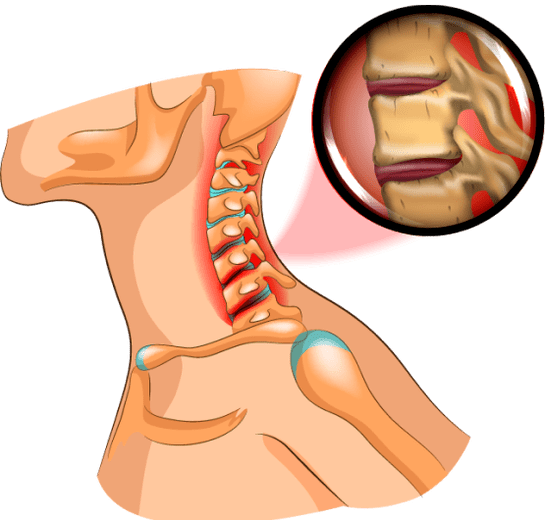
The intervertebral discs are a kind of shock absorber that relieves the pressure on the spine under load. Osteochondrosis worsens the quality of life and causes pain in the back, neck, head and tinnitus.
There are two aspects to the diagnosis. Experts abroad attribute the disorder to illnesses in children and adolescents. It is believed to be more common in children because their bones are in a developmental stage. Russian doctors diagnose osteochondrosis mainly in patients aged 25 to 55 years. The signs, causes, and types of the disease are the same in both cases.
How do I define osteochondrosis?
- Are there persistent or recurring back pain or muscle tension?
- Do you have goosebumps in your lower back or neck?
- Do you feel "shooting" in your back?
- Do you feel pain when you raise your arms or shake your head to the side?
- Do you regularly feel dizzy?
- Do you have bouts of noise and nausea?
If at least one answer is affirmative, it is worth contacting a specialist to conduct a study. If the diagnosis reveals a violation, the doctor will prescribe treatment and protect you from more serious and painful symptoms.
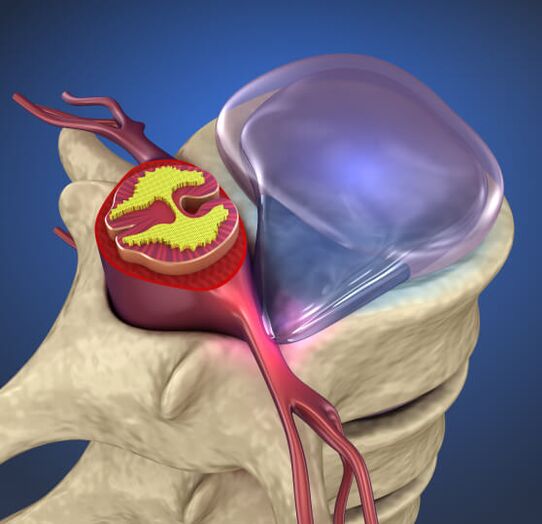
What causes osteochondrosis?
The massive incidence of osteochondrosis is related to the fact that people are in an upright position most of the time. In this case, the spine and intervertebral discs are exposed to increased stress. If the panes sit, lie and stand incorrectly, they lose their cushioning ability.
Over time, the intervertebral disc cracks and protruding hernias appear. They begin to squeeze blood vessels, the roots of the spinal cord, or the brain itself. As a result, pain and reflex tension appear in the muscles.
The risk group includes middle-aged and elderly people. Office workers, professional drivers, and tall people are most commonly faced with this disease. Risk factors for developing severe symptoms of a disorder can include:
- Flat feet;
- Inheritance;
- Obesity;
- Hypodynamia.
The reasons for the appearance of disorders in the articular cartilage:
Heavy load handling.
Improper posture when sitting, standing or lying down.
Injuries, overload.
Excessive stress while exercising.
High humidity and low temperature.
Activities that involve frequent changes in posture.
Types of osteochondrosis
Osteochondrosis can develop in any part of the spine. By localization, the disease is divided into: cervical, thoracic and lumbar. The latter type occurs 50% of the time.
Lumbar osteochondrosis
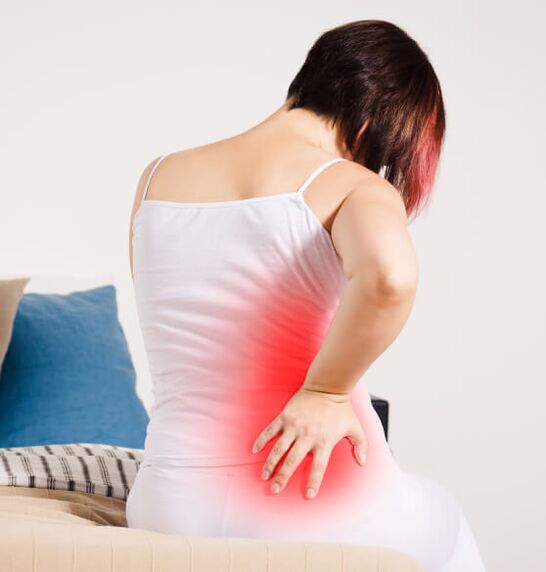
A similar diagnosis is made for both men and women. This is because of the increased stress involved in walking, running, exercising and sitting for long periods of time. The lumbar spine consists of 5 vertebrae, between which there are discs that give elasticity. If the metabolism does not take place, the intervertebral discs lose their properties and pain occurs.
Symptoms:
- Dull or sharp back pain that gets worse with movement.
- Pain in the legs, pelvic organs, sacral region.
- Impairment of mobility or sensitivity.
- Atrophy of the leg muscles in the acute course of the disease.
Lumbar osteochondrosis needs treatment. Without therapy, dangerous complications can arise: sciatica, hernia, protrusion. As a result, the natural blood supply to the spinal cord is disrupted, resulting in paralysis of the lower extremities.
Cervical osteochondrosis
"Make sure you turn your head" - urge the doctors. This way, you can avoid the dangerous diagnosis of cervical osteochondrosis. The neck is the most flexible part of the spine. The division consists of 7 vertebrae. The disease occurs as a result of metabolic disorders in the body, in the presence of salts in the neck or due to the often uncomfortable position of the head.
Symptoms:

- A headache;
- Pain in the heart area;
- Flashing "flies" before the eyes;
- Hard of hearing;
- Crunch in the cervical spine;
- Pain in the arm or shoulder joint;
- Numbness of the limbs.
Experts note that this type of disease is one of the most dangerous as it can cause poor blood flow to the brain, migraines, dystonia, and more serious diseases.
Osteochondrosis of the breast
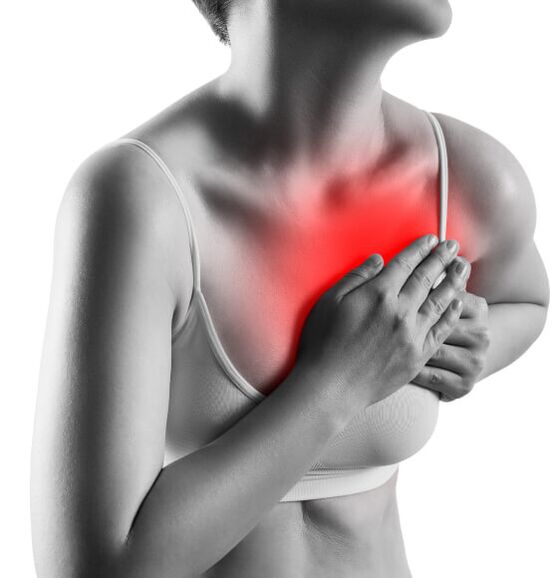
Disturbances in the thoracic spine are less common because the vertebrae are inactive. The pain that occurs in this area of the body is experienced by many people who do hard physical work or have a sedentary job. The cause of osteochondrosis can be a disturbed metabolism, an increased load on the intervertebral discs.
Symptoms:
- Chest pain or tension.
- Pain between shoulder blades when raising arms.
- Skin sensitivity disorders.
Two symptoms can occur in an acute disorder: dorsago and dorsalgia. Dorsago is accompanied by acute chest pain and shortness of breath. With dorsalgia, the pain in the area of the vertebrae of the department is not too severe, it increases gradually. The disease is often confused with other chest pathologies: heart attack, pneumonia, angina, etc. The diagnosis is made only by a specialist, based on the examination and research.
Stages of osteochondrosis
- There are no obvious symptoms at the first stage. With the periodicity, there are discomforts in the spine associated with fatigue or excessive physical exertion. The disease can be diagnosed during a routine examination, x-ray, or CT scan.
- The second stage is accompanied by pain syndrome, as the process of destruction of cartilage tissue begins and the gap between the intervertebral discs decreases. The pain at this stage is relieved by medication prescribed by a doctor.
- In the third stage, deformities of the spine begin: the fibrous ring is broken, an intervertebral fracture occurs. With the help of properly prescribed treatment, it is still possible to improve the condition of the spine.
- The fourth stage is irreversible changes in the spine that make it difficult for a person to move. Bone tissue grows between the vertebrae and connects the vertebrae. Most often, this form of osteochondrosis leads to a disability.
Diagnostic methods
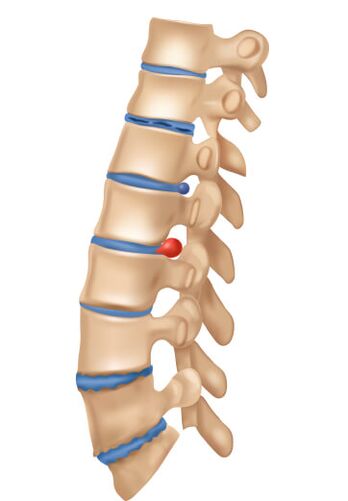
To determine the extent of the disease, check sensitivity and reflexes, the doctor will conduct a physical exam. In addition, blood and urine tests are carried out and indicators of calcium metabolism are examined.
To make an accurate diagnosis, diagnostic methods are used:
- Vascular ultrasound. Determination of the degree of impairment of blood flow in the vertebral arteries.
- Spinal x-ray.
- UKT. Construction of a three-dimensional image of the study area to record small displacements of the eddies
- UMRI. Examination of the condition of soft tissues to assess the condition of the spinal cord and to visualize the internal structure of the intervertebral discs.
treatment

Osteochondrosis is treated extensively. The main goal of therapy is to suppress painful sensations, eliminate muscle tension and stiffness of movements that occur due to pain. It is important not to self-medicate, but to consult a specialist and follow the recommendations.
To treat the spine, the doctor prescribes nonsteroidal anti-inflammatory drugs that reduce inflammation and swelling. Muscle relaxants are responsible for reducing muscle spasms. Ointments are used to relieve pain. Antioxidants and vitamins can be prescribed to protect nerve tissue.
prophylaxis
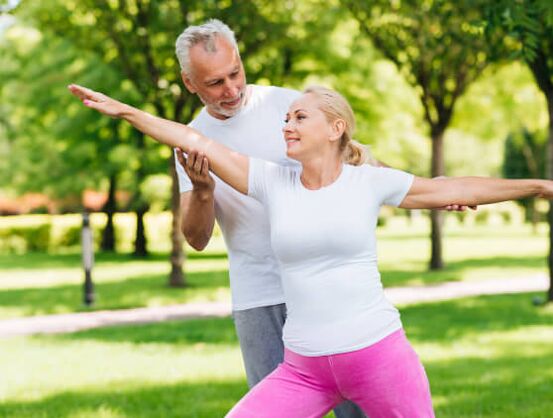
It is possible to maintain the health of the spine and prevent the appearance of symptoms or complications of osteochondrosis by observing the following prevention methods:
- drink enough water, control body weight;
- Eating foods that are high in collagen;
- Choosing an orthopedic mattress that supports the body;
- regular exercise.
Alternative methods can be tried: acupuncture, qigong or massage. Before starting any procedure, you should consult a doctor to ensure the health of the musculoskeletal system.

























